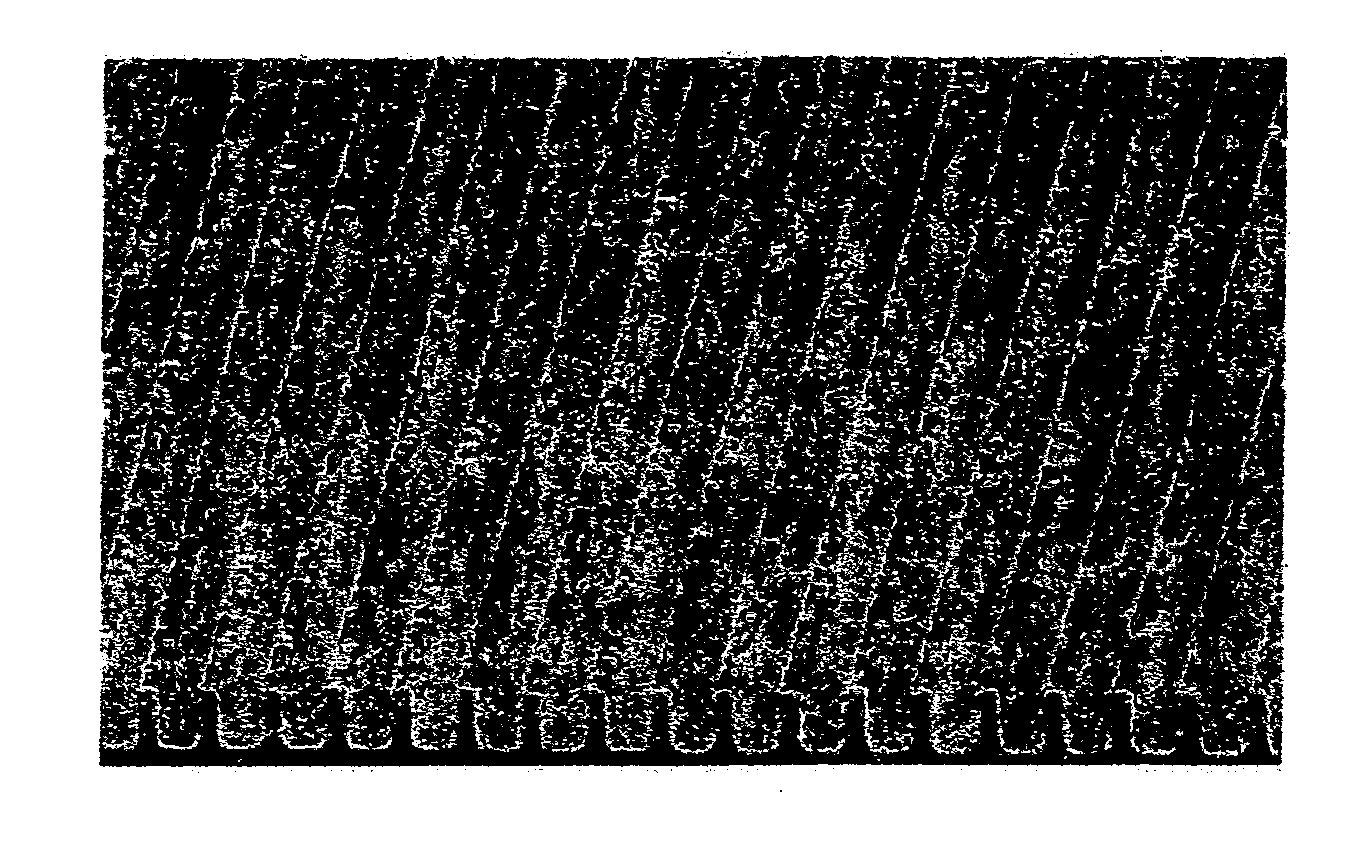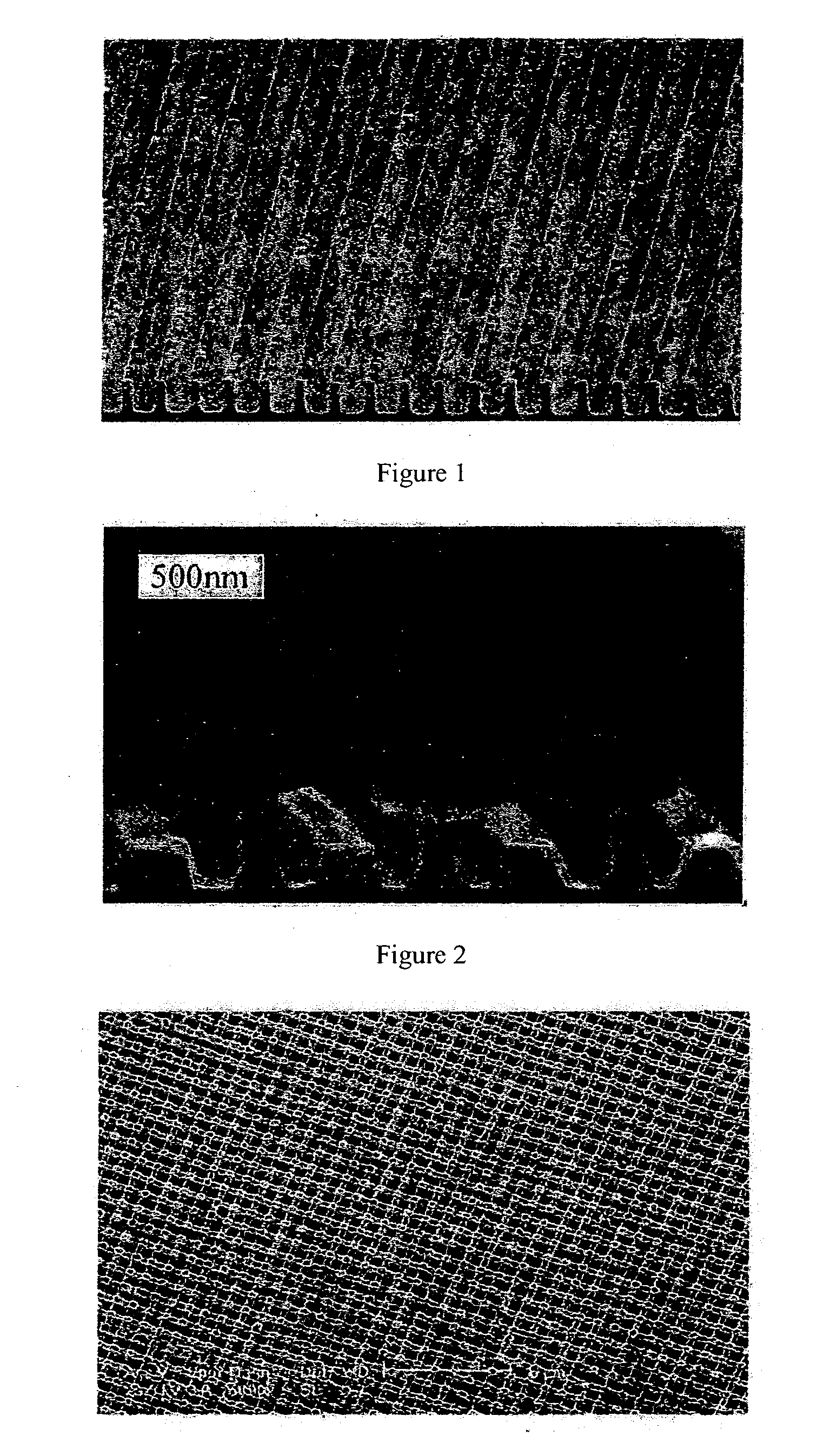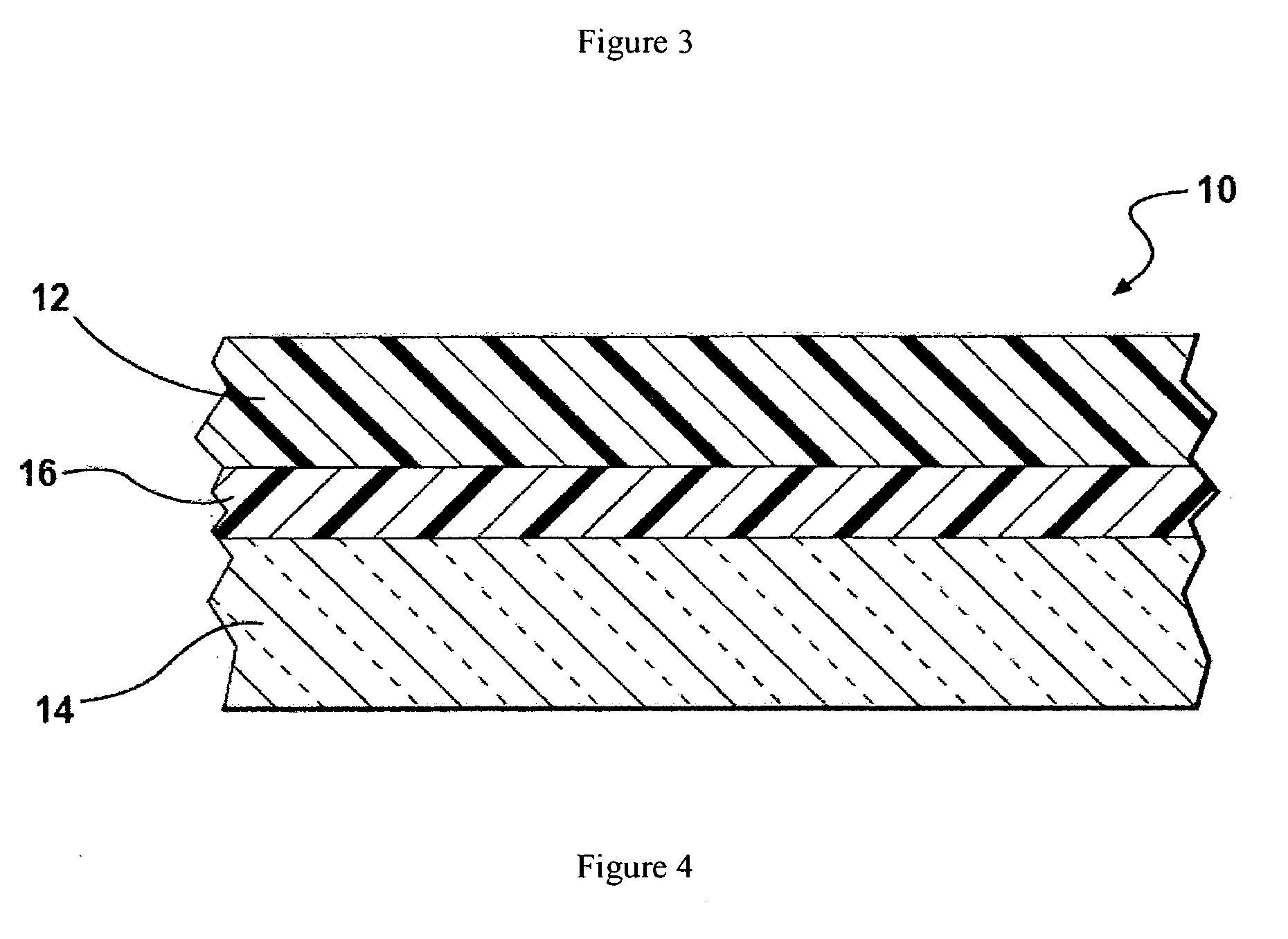Method of nanopatterning, a resist film for use therein, and an article including the resist film
a resist film and nano-patterning technology, applied in nanoinformatics, photomechanical devices, instruments, etc., can solve the problems of high adhesive force between a mold surface and the resist film, fracture and/or delamination of the resist film from the substrate, and poor pattern transfer of the large aspect ratio structure, etc., to achieve excellent resistance to oxygen plasma etching, low surface energy, and easy mold release
- Summary
- Abstract
- Description
- Claims
- Application Information
AI Technical Summary
Benefits of technology
Problems solved by technology
Method used
Image
Examples
example 1
[0035] A planarizing film 16 including PMMA is first formed on a silicon substrate 14. More specifically, the PMMA is dissolved in toluene to form a planarizing solution, which is spin-coated onto the silicon substrate 14 to form the planarizing film 16. The planarizing film 16 has a thickness of about 400 nm. A Polystyrene-poly(dimethyl siloxane) diblock copolymer containing approximately 50% of PS and 50% of PDMS by weight (GPC: Mn=45,000 g / mol; Mw / Mn=1.10) is dissolved in PGMEA. The copolymer, i.e., the solution of the copolymer, is spin-coated onto the planarizing film 16 to form a resist film 12 having a thickness of about 300 nm. A nano- and micron-scale pattern is formed in the resist layer using a NX-1000 imprinter commercially available from Nanonex, Inc. of Monmouth Junction, N.J. A scanning electron microscopy (SEM) micrograph of the pattern is illustrated in FIG. 1.
example 2
[0036] The planarizing film 16 and the resist film 12 are formed on the substrate 14 as described above in Example 1. However, the patterns are formed through imprinting so as not to completely extend through the resist film 12 into the planarizing film 16. After imprinting, the mold and the substrate 14 are separated and a replica of the mold pattern is imprinted into the resist film 12 (see, for example, FIG. 1).
[0037] Residual copolymer in the pattern is removed through fluorine plasma etching to expose the planarizing film 16. A lift-off process is then carried out by oxygen plasma etching the resist film 12 and the planarizing film 16. The oxygen plasma etch rate of the copolymer is about 0.98 nm / min., and the oxygen plasma etch rate of the PMMA is about 110 nm / min. As a result of this disparity in oxygen plasma etch rates, the undercut feature is achieved, as illustrated in FIG. 2. Due to the presence of silicon in the resist film 12, the resist film 12 shows very interesting...
PUM
 Login to View More
Login to View More Abstract
Description
Claims
Application Information
 Login to View More
Login to View More - R&D
- Intellectual Property
- Life Sciences
- Materials
- Tech Scout
- Unparalleled Data Quality
- Higher Quality Content
- 60% Fewer Hallucinations
Browse by: Latest US Patents, China's latest patents, Technical Efficacy Thesaurus, Application Domain, Technology Topic, Popular Technical Reports.
© 2025 PatSnap. All rights reserved.Legal|Privacy policy|Modern Slavery Act Transparency Statement|Sitemap|About US| Contact US: help@patsnap.com



